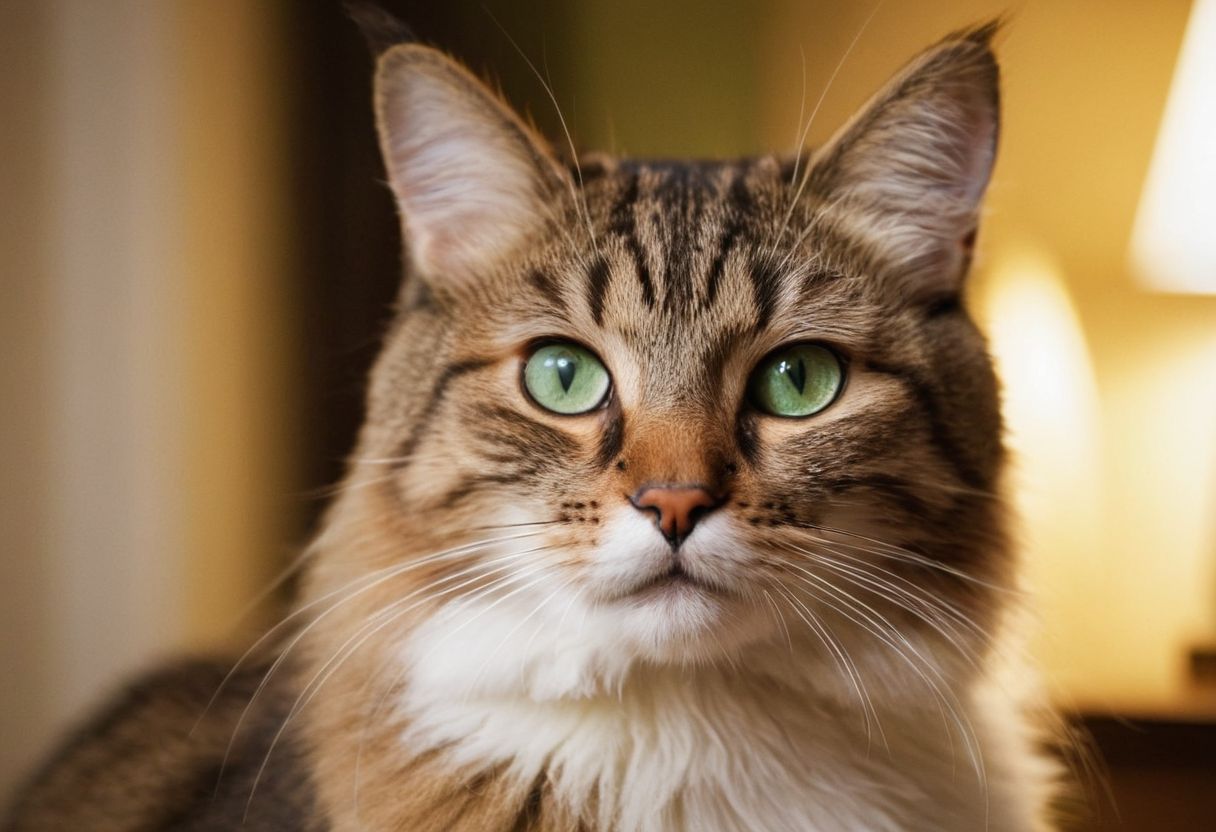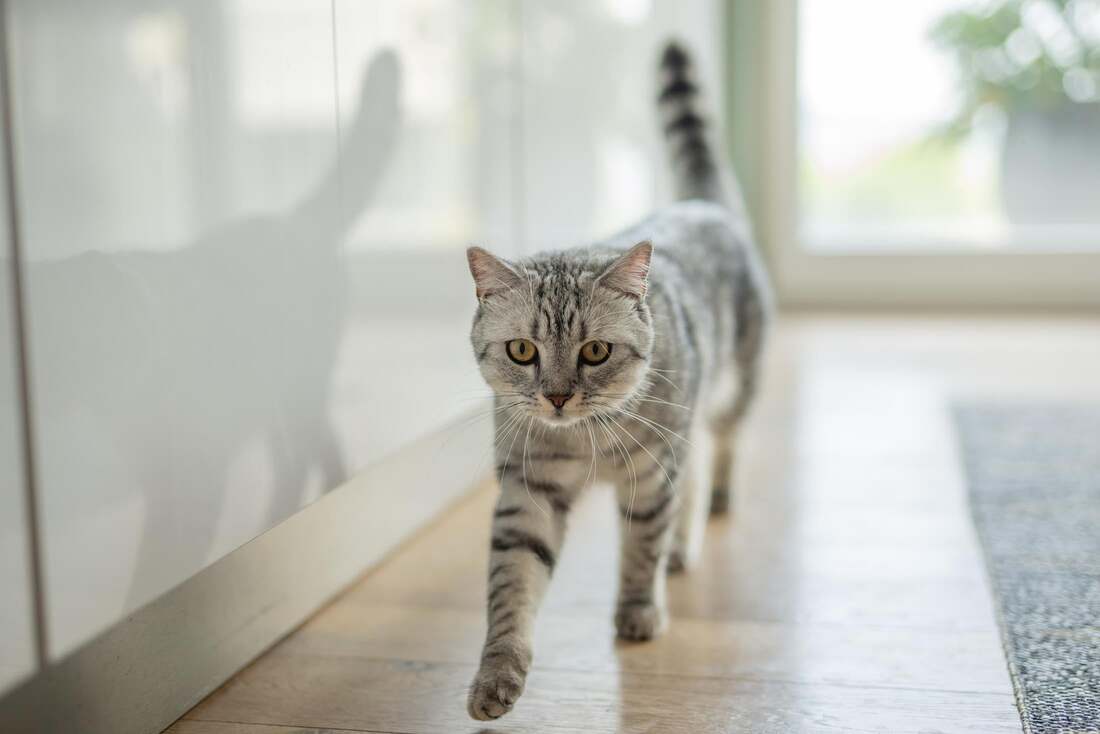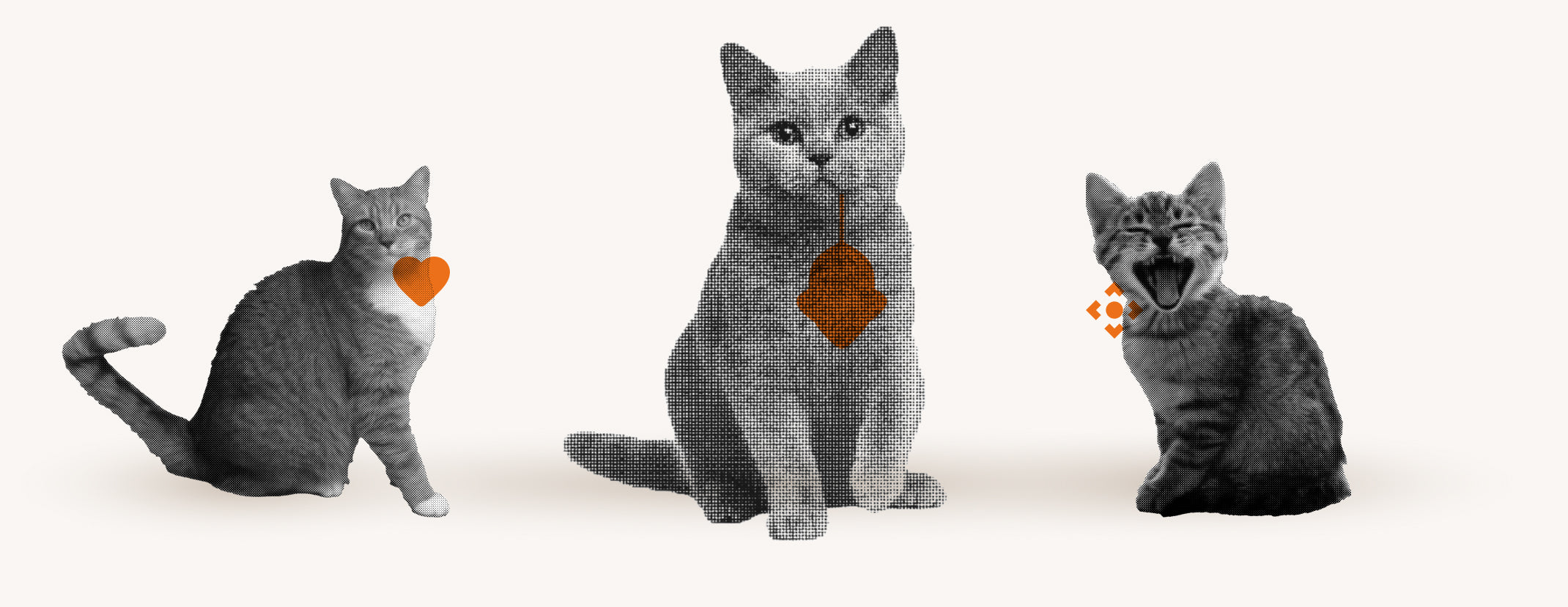Have you ever wondered what your cat is trying to tell you?
It is often difficult to understand why your cat meows, purrs or hisses.
Cats communicate through both sounds and body language, and each signal has its own meaning.
In this blog, you will learn how to interpret your cat's body language and different sounds to build a deeper connection with your furry friend.
Basics of Body Language in Cats

A cat's body language is a fascinating window into its emotional world. To better understand your cat, it is important to correctly interpret its nonverbal signals. Cats use their bodies in many different ways to express their feelings and needs. A careful observer can learn to distinguish between signs of joy, fear or aggression.
Some key signals in cat body language are particularly telling. For example, the position of the tail, the position of the ears and the expressions of the eyes can reveal a lot about how a cat is feeling. However, it is crucial to consider these signals in context because the same signal can have different meanings in different situations.
With a little practice and patience, you can learn to recognize and correctly interpret the subtle cues in your cat's body language. This will not only strengthen your relationship, but will also help you better respond to your animal friend's needs. Remember that every cat is unique and has its own special way of expressing itself.
Understanding the Language of the Tail
A cat's tail position offers valuable insight into their emotional state. A tail held high often signals joy and contentment, whereas a tail tucked between the legs can indicate fear or submission. Tail wagging from side to side usually indicates insecurity or stress.
When a cat wraps its tail around its body while sitting or lying relaxed, it shows that it is comfortable and secure. In confrontational situations, a fluffed-up tail that looks like a bottle brush can serve to make the cat appear larger and more threatening. This posture is often observed when encountering strange animals or in threatening situations.
Ear Positions and Their Meanings
A cat's ears are also an important indicator of their mood. Forward-facing ears indicate curiosity and alertness, while flat or backward-turned ears can indicate fear, aggression or discomfort. It is important to look at the entire body language to correctly interpret ear position.
Sometimes cats may also have different positions for each ear, which can indicate mixed emotions or uncertainty. If the ears are slightly laid back to the side, this is often an appeasement signal that shows the cat is not a threat and wants to be left alone. Recognizing these subtle differences can help you better respond to your cat's needs.
The eyes speak volumes
A cat's eyes are actually a window to their soul. Wide-open eyes with large pupils can signal excitement or fear, while half-closed eyes or slow blinking indicate relaxation and trust. Mutual slow blinking between you and your cat can even be interpreted as a sign of affection.
A stare, on the other hand, can be a sign of aggression or challenge, especially when accompanied by other signs of tension such as ears laid back or raised fur on the back. Learning how to interpret these different types of gaze can help you better understand your cat's emotional state and respond accordingly.
The different sounds of cat language
Cats use a variety of sounds to communicate with us and their environment. Each sound has its own meaning and is used in specific situations. The most well-known sound is the meow, which can occur in different pitches and intensities. It is often used to attract attention or to announce specific needs, such as hunger or the desire for company. But cats have a much wider repertoire of sounds that they use to express their emotions and needs.
In addition to meowing, purring, hissing and howling are important sounds in cat language. Each of these sounds can mean different things depending on the context in which they are used. For example:
- Purring is often associated with contentment, but can also occur in stressful situations.
- Hissing is a clear sign of discomfort or fear.
- Howling or crying can indicate pain or discomfort, but can also be used to communicate during mating season.
To really understand what your cat wants to tell you, it is important to know the nuances of its vocalizations and to interpret them correctly. This requires observation and experience, because it is often subtle differences in the volume, pitch or duration of the sounds that determine what exactly the cat wants to express. A deep understanding of cat language not only helps to better meet your cat's needs, but also strengthens the bond between you and your animal companion.
Purring: More than just contentment
Purring is one of the most soothing sounds cats can make. Many people assume that a purring cat is a happy cat. However, purring is not always a sign of contentment. It can also occur in situations where the cat is in pain, anxious, or trying to calm itself down. So purring is not only a way to communicate well-being, it also has a self-soothing function that comes into play in various emotional states.
Scientific studies have shown that purring can even have healing properties. The vibrations produced by purring are able to promote the healing of bones and tissues and relieve pain. This explains why cats can also purr in stressful or painful situations. So it's important to pay attention to the situation in which your cat purrs to better understand their true feelings and needs.
Hissing – A Sign of Discomfort
Hissing is a sound that often causes misunderstandings, as many immediately associate it with aggression. In fact, however, hissing is a defensive signal that cats use when they feel threatened or afraid. A hissing cat is not trying to attack, but rather wants to create distance and signal that it does not want to be disturbed. This behavior can occur in various situations, whether it is an unexpected approach or when the cat is in pain.
So hissing is an important part of nonverbal communication in cats. It helps them set their boundaries and express their discomfort without getting involved in a physical conflict. As a cat owner, it is crucial to pay attention to hissing and respond accordingly by giving the cat space and trying to understand and eliminate the cause of their discomfort.
Howling and crying: interpreting cat signals
Howling and crying are sounds cats make when they are in extreme emotional states. These sounds are often louder and more piercing than normal meowing and signal urgent needs or discomfort. When a cat howls or cries, it can indicate a variety of things, such as pain, fear, or even communication with other cats during mating season.
It is important to pay attention to the circumstances under which a cat whines or cries. Sometimes this behavior can be an indication of a serious condition that requires medical attention. In other cases, it can be a sign of stress or anxiety triggered by environmental changes or social conflicts with other pets. As a responsible cat owner, you should try to identify the causes of the whining or crying and act accordingly to ensure your cat's well-being.
Understand and react better with Flappie
Have you ever noticed that your cat hesitates to go through the cat flap when it has something in its mouth? This could be a sign that it is unsure whether to bring the "gift" into the house. This is where Flappie comes in. Flappie 's smart cat flap is equipped with a camera and artificial intelligence that can detect whether your cat has prey with it. The following points make Flappie an indispensable helper in your home:
- Selective Access Control : Prevents your cat from bringing prey into the house.
- Prey detection : The AI-powered camera detects whether your cat has something in its mouth.
- Notifications : You will receive a notification via the Flappie app when your cat tries to enter with prey.
Frequently Asked Questions
How can you learn cat language?
To learn cat language, it is important to observe and correctly interpret your cat's body language and the different sounds it makes. Pay attention to the position of the tail, the position of the ears, the expressions in the eyes, as well as the different sounds such as meowing, purring, hissing and howling. Each behavior and sound has different meanings in different contexts, which you can understand over time through observation and experience.





Share:
Flushing Cat Litter Down the Toilet: What Do You Need to Know?
Cat Training Neck Grip: Alternatives and Risks